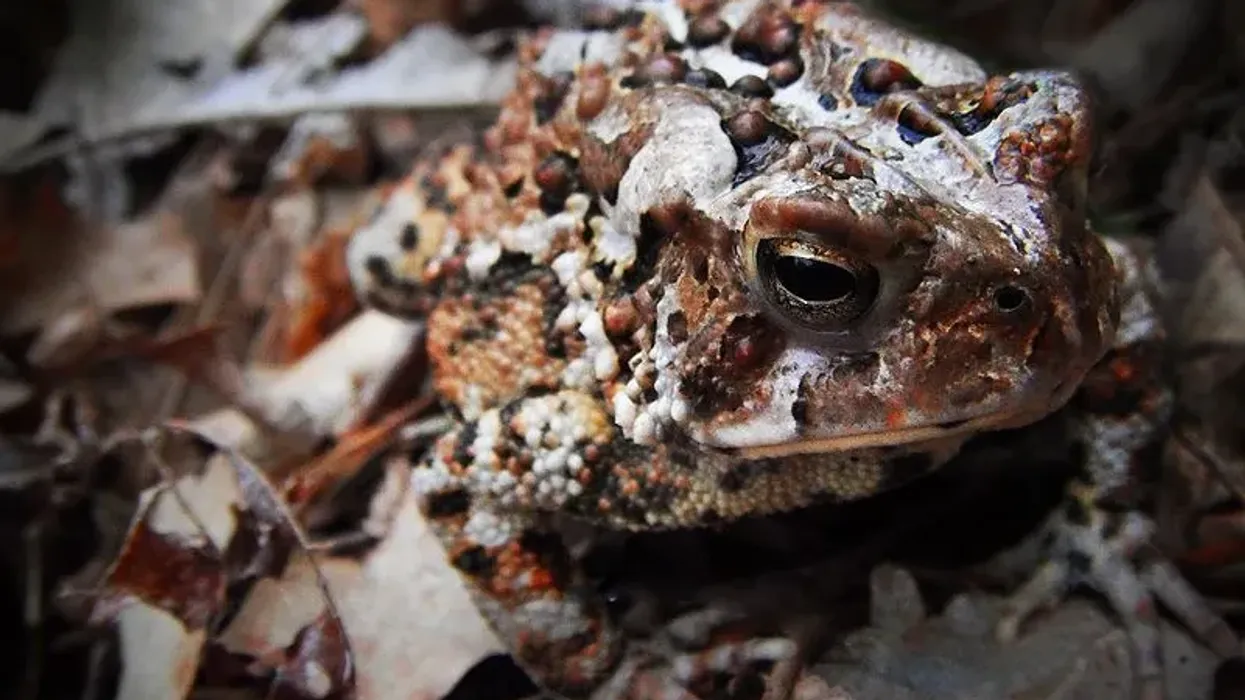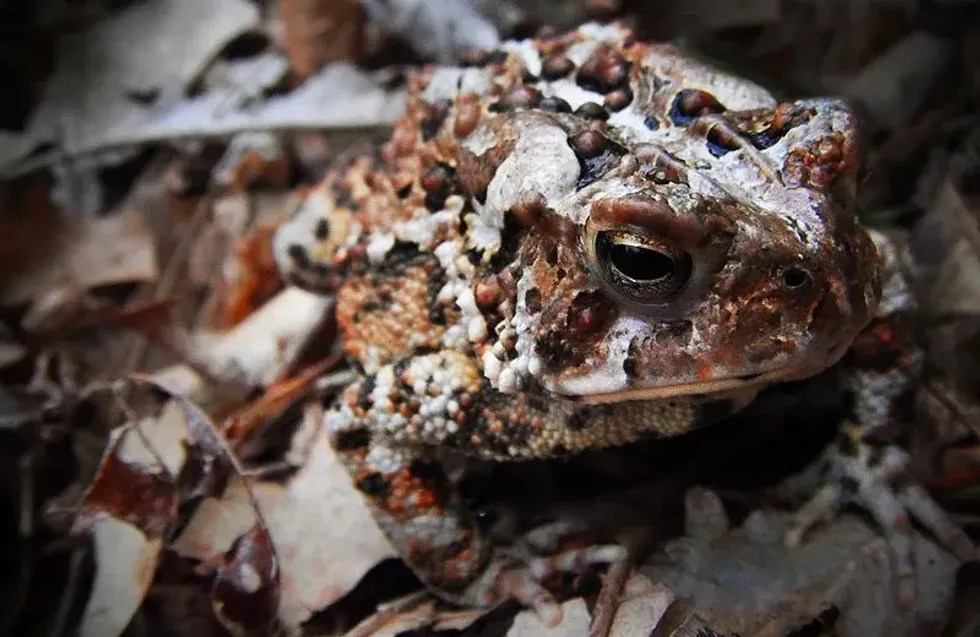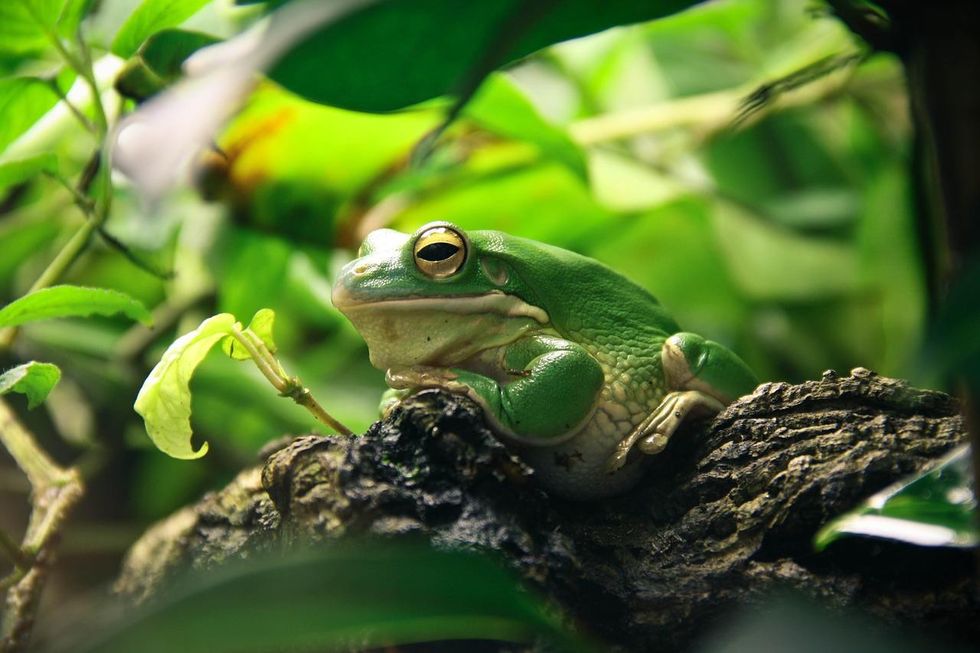Known by the scientific name Anaxyrus americanus, the Fowler's toad is a poisonous species of toads found active during the night owing to its nature as a nocturnal predator.
Their habitat range includes areas like coastal plains, sand prairies, shallow water, sandy beaches in places such as North America, mainly the southern and eastern United States, the Florida Peninsula, southern shore of Lake Michigan, and the Atlantic coast range of southern North Carolina.
If you liked reading this, then you must also give a our articles about the fire-bellied toad and marine toad a read.
Fowler's Toad Interesting Facts
What type of animal is the Fowler's toad?
Anaxyrus fowleri frogs can camouflage themselves which helps them to blend in with their surroundings. They are often gray, greenish, or brown in color which allows them to hide easily behind small plants, trees, and stones to save themselves from predators.
This species secretes poison from warts on their back which are distasteful to their predators and sometimes fatal. They are also known to play dead if they are threatened. They mostly breed during summer from April to July and also sometimes during the spring season.
What class of animal does the Fowler's toad belong to?
The Fowler's toad scientific name is Anaxyrus fowleri, and they belong to the amphibian class. The Fowler's toad is a species similar to the American toad.
These species have small cranial ridges near the parotid glands and warts on their dorsal spots which helps in the conservation of poison. Males are darker than the females and have black throats. They are a nocturnal species and they exhibit active behavior at night.
How many Fowler's toads are there in the world?
The exact number is unknown, but this species is abundantly found and has the conservation status of Least Concern.
Where do Fowler's toads live?
Fowler's toads are found in the coastal plain and shallow waters of North America. They are found mostly in eastern United States, the Florida Peninsula, north of Illinois, and the south shore of Lake Michigan.
They also occur along the Atlantic coast to southern North Carolina and in the adjacent parts of Canada. They are a native North American species. In Canada, they are found only along the north shore of Lake Erie.
What is the Fowler's toads' habitat?
Fowler's toads live mainly in terrestrial places such as open woodlands, sand prairies, coastal plains, meadows, and sandy beaches. They hide in the soil during hot and dry periods and come out in the open during rainfall. Similar to other amphibians, they hibernate during the winter season. They breed mostly in backwater marshes.
Who do Fowler's toads live with?
These amphibians live alone after they have grown into adults, just like other frogs and toads. As a result, these species rarely meet unless they have to mate.
How long do Fowler's toads live?
After the tadpoles come out of their eggs, shallow water serves as their habitat for a few weeks until they become adults, after which they live up to five years.
How do they reproduce?
Their breeding season is in summer during April and June. Their breeding place ranges from shallow waters like ponds to lakeshores and marshes.
During the breeding season, males create a call to attract the females. The distribution of eggs ranges from 7000-10,000 eggs per female, and the males fertilize these eggs. Fowler's toad eggs hatch after a period of two to seven days.
This amphibian's breeding season is also throughout spring. After the eggs hatch, the tadpoles grow within three to four weeks and are able to breed after one season.
What is their conservation status?
The Fowler's toad is under the conservation status of Least Concern. However, recently, there has been a sharp decline in the populations of this species due to road kills and habitat loss.
Fowler's Toads Fun Facts
What do Fowler's toads look like?
The Fowler's toad is found in a range of brown, gray, greenish, and rusty red colors. Adult toads have a pale stripe on their back. They have a whitish belly with one dark spot by which you can identify them.
The male has a darker color than the female. They have dry, dark dorsal spots on their skin and these dorsal spots have three or more warts. These warts have poison inside.
Their legs are short and chubby, and they have un-webbed feet with round-tipped fingers. These toads have small cranial ridges, which are connected to parotoid glands. They have a large dark breast patch and the males also have a black throat.
How cute are they?
The Anaxyrus americanus is not cute at all. In fact, they are really ugly which might be useful for their conservation.
How do they communicate?
A male Fowler's toad call attracts the females. The Fowler's toad sound is part of the behavior they exhibit during the breeding season in spring and summer. The Fowler's toad call sounds like a crying baby or a nasal 'waaa'. This call can range from two to five seconds.
How big are Fowler's toads?
The Fowler's toad is small in length and their length range is 2-3.5 in (5-9.5 cm).
How fast can Fowler's toads run?
Their bodies are designed to move and jump faster and higher to escape their predators and to catch their prey.
How much do Fowler's toads weigh?
The Fowler's toad can weigh up to 0.14-0.49 oz (4-14 g).
What are the male and female names of the species?
The Fowler's toads are distinguished as males and females only. They don't have any specific names for their sexes.
What would you call a baby Fowler's toads?
A baby Fowler's toad is called Fowler's toad tadpoles or juvenile Fowler's toads. The breeding of this species mostly takes place in summer or spring when the females lay strings of eggs along the banks of ponds, rivers, and coastal plains.
What do they eat?
Fowler's toads feed on whatever they find in their surroundings, mostly insects and other small invertebrates. They do not like to feed on earthworms that most frogs, especially their close relatives, love to feed on under the genus Anaxyrus, the American toad.
They are a nocturnal species and mostly hunt during the night. The tadpoles mainly eat algae and bacterial mats found near the river or ponds.
Are they poisonous?
Yes, the Fowler's toad poisonous pouches on their body can be dangerous. They have a dark spot on their skin with three warts and these warts are full of poison. These allow them to protect themselves from their predators.
Some other poisonous frogs and toads include the granular poison frog, poison dart frog, and the poison frog.
Would they make a good pet?
They can be kept as pets. However, they need to be taken care of only by experts. They are poisonous toads that have their safe habitat in the wild. Besides, ensuring proper Fowler's toad care might be difficult because you cannot go near them as they are harmful.
Did you know...
It is usually advisable to wash your hands after holding a Fowler's toad because they might transmit toxins through warts on their skin. Some people might be affected by the toxins, while others not.
However, the Fowler's toad sometimes appears out of nowhere, occasionally after heavy rain in areas where you would never expect them to be which can be very spontaneous.
What is the difference between the Fowler's toad vs American toad?
You can differentiate American toad vs Fowler's toad by counting the number of bumps on each of their backs. The Fowler's toad has three or four bumps per blotch, while American toads only have one or two bumps. In addition, the Fowler's toad has a white belly, whereas American toads have a white belly with black spots.
Can you keep a Fowler's toad as a pet?
Yes, you can keep the Fowler's toad as a pet, but only experts can keep them as they can be dangerous. They feed on insects and can be kept in fish tanks or aquariums. If you want to take care of them, keep them in groups of six in a medium-sized tank. They do not move that much.
Here at Kidadl, we have carefully created lots of interesting family-friendly animal facts for everyone to discover! Also, learn more about some other amphibians from our pool frog facts and horned toad facts pages.
You can even occupy yourself at home by coloring in one of our free printable fowler's toad coloring pages.










